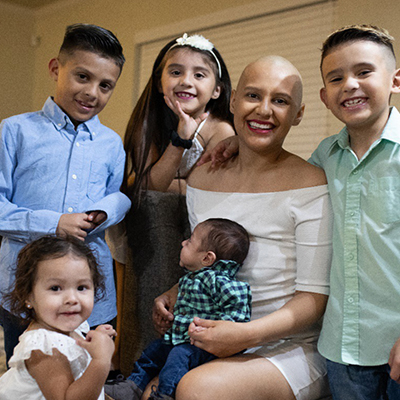-
Agency for Healthcare Research and Quality: Medical Expenditure Panel
Survey, 2018-2019. Public-use data file and documentation. Retrieved
from: https://meps.ahrq.gov/data_stats/download_data_files_detail.jsp?cboPufNumber=HC-216. July 2022.
-
Zhao J, Miller KD, Islami F, et al. Racial/Ethnic Disparities in Lost Earnings
From Cancer Deaths in the United States. JNCI Cancer Spectrum.
2020;4(pkaa038). doi:10.1093/jncics/pkaa038.
-
Source for all data in this section: American Cancer Society. Cancer
Facts & Figures for Hispanic/Latino People 2021-2023. Atlanta:
American Cancer Society, Inc. 2021.
-
Mallin K, Browner A, Palis B, et al: Incident cases captured in the national
cancer database compared with those in U.S. Population based central
cancer registries in 2012-2014. Ann Surg Oncol 26:1604-1612, 2019.
-
Zheng, S; Ren, ZJ; Heineke, J; Geissler, KH. Reductions in Diagnostic Imaging
with High Deductible Health Plans. Medical Care. February 2016 - Volume 54
- Issue 2 - p 110–117. doi: 10.1097/MLR.0000000000000472.
-
Zheng Z, Jemal A, Banegas MP, Han X, Yabroff KR. High-Deductible Health
Plans and Cancer Survivorship: What Is the Association With Access to
Care and Hospital Emergency Department Use?. J Oncol Pract. 2019 Aug
8;:JOP1800699. doi: 10.1200/JOP.18.00699. [Epub ahead of print] PubMed
PMID: 31393809.
-
Wharam JF et al. Vulnerable And Less Vulnerable Women In High-Deductible
Health Plans Experienced Delayed Breast Cancer Care. March 2019. Health
Affairs. https://doi.org/10.1377/hlthaff.2018.05026.
-
National Center for Health Statistics: National Health Interview Survey, 2019-
2020. Public-use data file and documentation. Retrieved from:
https://www.cdc.gov/nchs/nhis/2020nhis.htm. July 2022.
-
Ekwueme DU, Zhao J, Rim SH, de Moor JS, Zheng Z, Khushalani JS, Han X, Kent
EE, Yabroff KR. Annual Out-of-Pocket Expenditures and Financial Hardship
Among Cancer Survivors Aged 18-64 Years - United States, 2011-2016. MMWR
Morb Mortal Wkly Rep. 2019 Jun 7;68(22):494-499. doi: 10.15585/mmwr.
mm6822a2. PMID: 31170127; PMCID: PMC6553808.
-
United States Census Bureau, Current Population Survey, 2020 and 2021
Annual Social and Economic Supplements.
-
Agency for Healthcare Research and Quality: Medical Expenditure Panel
Survey, 2018-2019. Public-use data file and documentation. Retrieved
from: https://meps.ahrq.gov/data_stats/download_data_files_detail.jsp?cboPufNumber=HC-216. July 2022.
-
Ibid.
-
Note that all differences between populations presented in this
graphic are statistically significant. Source for all data in this section:
National Center for Health Statistics: National Health Interview Survey,
2019-2020. Public-use data file and documentation. Retrieved from:
https://www.cdc.gov/nchs/ nhis/2020nhis.htm. July 2022.
-
Survivor Views web survey, May 16-26, 2022, 2,611 cancer patients and
survivors nationwide including 1,370 oversampled by race, ethnicity, and
income.
-
Veenstra CM, Regenbogen SE, Hawley ST, Abrahamse P, Banerjee M, Morris
AM. Association of Paid Sick Leave With Job Retention and Financial Burden
Among Working Patients With Colorectal Cancer. JAMA. 2015 Dec 22
29;314(24):2688-90. doi: 10.1001/jama.2015.12383. PubMed PMID: 26717032.
-
Veenstra, C.M., Abrahamse, P., Wagner, T.H., Hawley, S.T., Banerjee, M. &
Morris, A.M. (2018). Employment Benefits and Job Retention: Evidence Among
Patients With Colorectal Cancer. Cancer Med. 2018 Mar; 7(3): 736–745. doi:
10.1002/cam4.1371.
-
Goodman, Julia M., Richardson, Dawn M. (2022). ”Access to paid family and
medical leave in the U.S. not equitable across race, ethnicity”, UC Berkeley
Public Health. https://publichealth.berkeley.edu/news-media/research-highlights/access-to-paid-family-and-medical-leave-in-the-us-not-equitable-across-race-ethnicity/.
